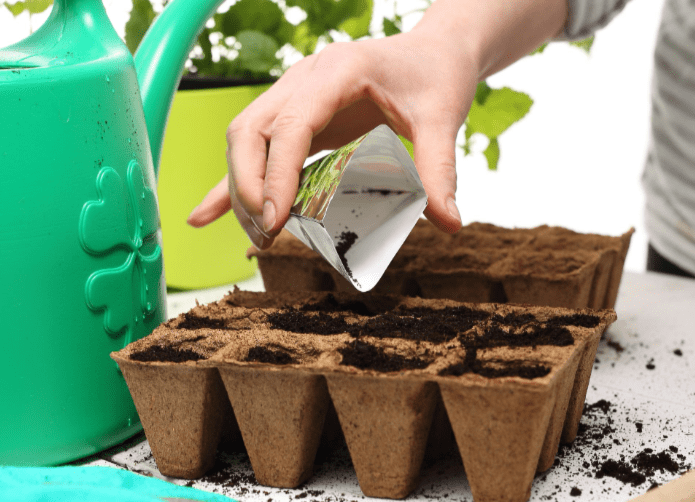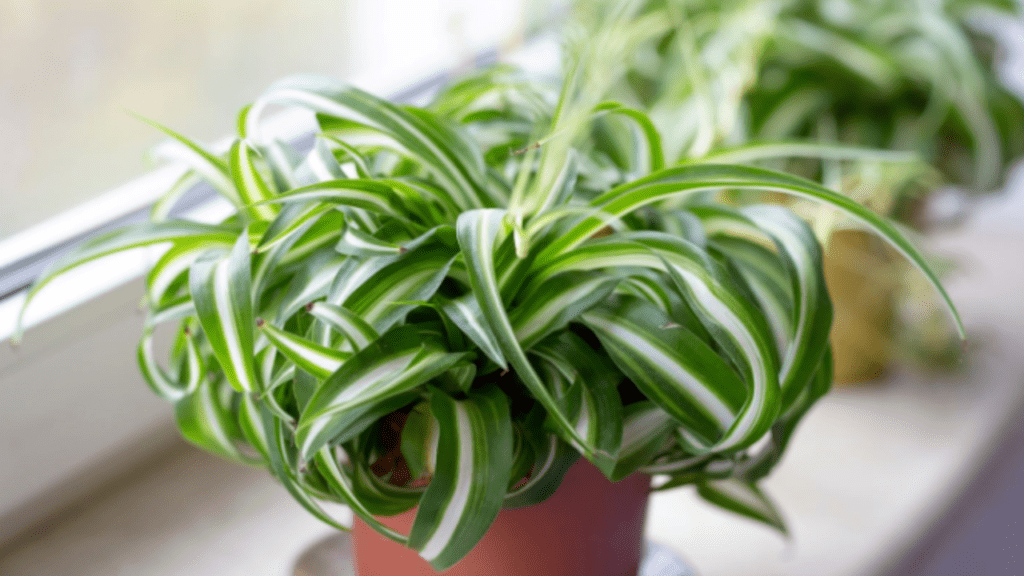
How to Successfully Grow Spider Plant Seeds at Home
Spider plants are a popular and low-maintenance houseplant that can easily be grown from seeds at home. In this post, we will provide you with all the information you need to successfully grow spider plant seeds, including the best soil, watering schedule, and sunlight requirements for optimal growth. We will also include tips for caring for your spider plant once it has sprouted. Whether you’re a beginner gardener or looking to add some greenery to your home, this guide will help you successfully grow spider plant seeds at home.
Growing spider plant seeds at home can be a rewarding and enjoyable experience. Spider plants are known for their air purifying qualities and ease of care, making them a popular choice for indoor plant enthusiasts. To successfully grow spider plant seeds at home, you will need to start with the right soil. Use a lightweight, well-draining potting mix to allow for good air circulation and prevent water from pooling around the roots. When planting the seeds, be sure to space them out evenly in the soil and cover them lightly with a thin layer of potting mix. Water the soil lightly and keep it consistently moist, but not waterlogged. Spider plants prefer bright, indirect sunlight, so be sure to place them in a location where they can receive plenty of light. Once the seeds have sprouted and the plant has grown, you can continue to care for it by watering it regularly and occasionally fertilizing it with a balanced, water-soluble fertilizer. With the right care and attention, your spider plant seeds will grow into beautiful, healthy plants that will bring a touch of greenery to your home.
Table of Contents
ToggleUnderstanding Spider Plants
Spider plants are a popular and easy-to-care-for houseplant. They are known for their long, arching leaves and ability to produce offshoots, or “spiderettes,” that can be propagated into new plants. To successfully grow spider plant seeds at home, you will need to start with the right soil. Use a lightweight, well-draining potting mix to allow for good air circulation and prevent water from pooling around the roots. When planting the seeds, be sure to space them out evenly in the soil and cover them lightly with a thin layer of potting mix. Water the soil lightly and keep it consistently moist, but not waterlogged.
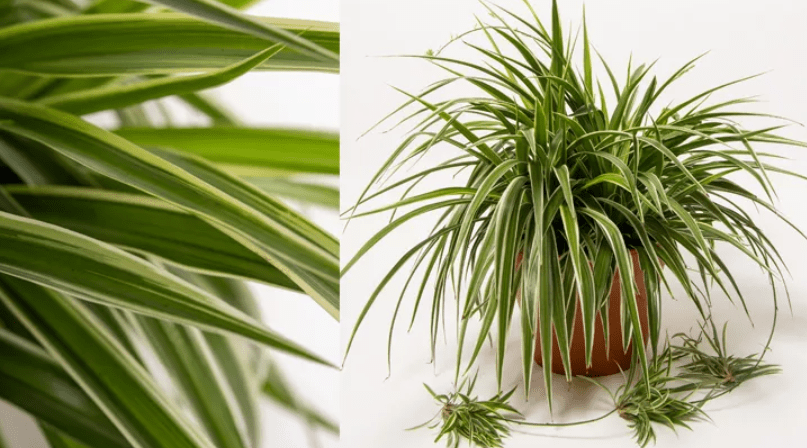
Spider plants prefer bright, indirect sunlight, so be sure to place them in a location where they can receive plenty of light. Once the seeds have sprouted and the plant has grown, you can continue to care for it by watering it regularly and occasionally fertilizing it with a balanced, water-soluble fertilizer.
With the right care and attention, your spider plant seeds will grow into beautiful, healthy plants that will bring a touch of greenery to your home. Overall, understanding the needs of spider plants and providing the proper care will ensure their success in your home.
Description and characteristics of spider plants (Chlorophytum comosum)
Spider plants, also known as Chlorophytum comosum, are popular houseplants known for their air-purifying properties and easy care. They have long, arching leaves that are green with white stripes, giving them a unique and attractive appearance. Spider plants are easy to grow and propagate, making them a popular choice for both beginner and experienced gardeners.
When it comes to caring for spider plants, it’s important to use a lightweight, well-draining potting mix to allow for good air circulation and prevent water from pooling around the roots. When planting the seeds, be sure to space them out evenly in the soil and cover them lightly with a thin layer of potting mix. Water the soil lightly and keep it consistently moist, but not waterlogged. Spider plants prefer bright, indirect sunlight, so be sure to place them in a location where they can receive plenty of light. Once the seeds have sprouted and the plant has grown, you can continue to care for it by watering it regularly and occasionally fertilizing it with a balanced, water-soluble fertilizer.
Overall, understanding the needs of spider plants and providing the proper care will ensure their success in your home. With the right care and attention, your spider plant seeds will grow into beautiful, healthy plants that will bring a touch of greenery to your home.
Benefits of having spider plants in your home (air purification, aesthetic appeal)
Spider plants are a great addition to any home for several reasons. First, they are excellent at purifying the air by removing toxins like formaldehyde and xylene. This can improve air quality and promote a healthier living environment. In addition to their air purification benefits, spider plants also add a touch of natural beauty to your home. Their long, arching leaves and small white flowers can add a decorative element to any room. They are also low-maintenance and easy to care for, making them a great choice for both beginner and experienced gardeners. Overall, having spider plants in your home can improve air quality and enhance the aesthetic appeal of your living space.
Common varieties of spider plants
include the Variegatum, Variegata, and Bonnie plants. The Variegatum spider plant has long green leaves with white stripes, while the Variegata has shorter, wider leaves with white stripes. The Bonnie variety has curly, twisted leaves that give it a unique appearance. Each variety of spider plant has its own unique characteristics, but all are easy to care for and can thrive in most indoor environments. Whether you choose the Variegatum, Variegata, or Bonnie spider plant, you can enjoy the air purification and aesthetic benefits they bring to your home.
Choosing the Right Spider Plant Seeds
Types of spider plant seeds available
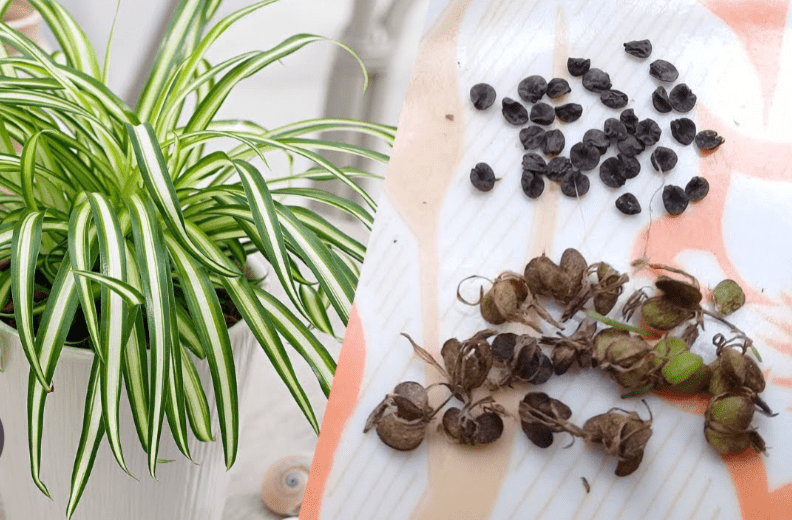
When choosing spider plant seeds, it’s important to consider the specific variety you want to grow. Common varieties of spider plants include the Variegatum, Variegata, and Bonnie plants, each with their own unique characteristics. The Variegatum has long green leaves with white stripes, the Variegata has shorter, wider leaves with white stripes, and the Bonnie variety has curly, twisted leaves. All varieties are easy to care for and can thrive in most indoor environments. When selecting spider plant seeds, consider the specific variety you want and ensure you have the appropriate growing conditions for that variety. Whether you choose the Variegatum, Variegata, or Bonnie spider plant, you can enjoy the air purification and aesthetic benefits they bring to your home.
How to select high-quality seeds
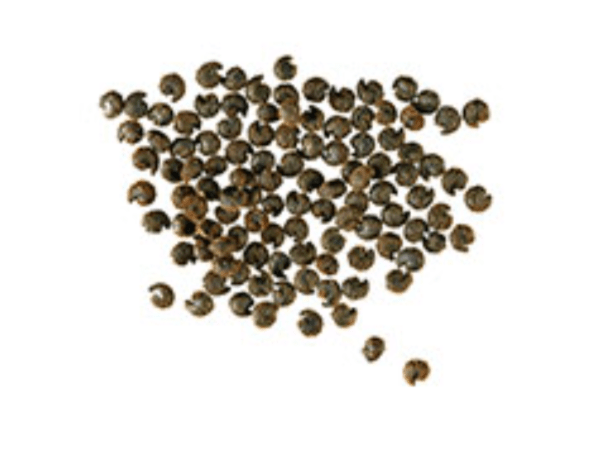
When selecting high-quality spider plant seeds, look for seeds that are plump, firm, and free from damage or discoloration. It’s important to choose seeds from a reputable supplier to ensure they are fresh and viable. You can also look for seeds that are labeled as organic or non-GMO if that is important to you. Additionally, consider the growing conditions and care requirements of the specific spider plant variety you want to grow, and choose seeds that are suited to those conditions. By selecting high-quality seeds and providing the right growing environment, you can set yourself up for success in growing healthy and thriving spider plants.
Where to buy spider plant seeds (nurseries, online retailers)
When looking to buy spider plant seeds, you have a few options to consider. Nurseries and garden centers often carry a variety of seeds, including spider plant seeds. You can also check with local plant enthusiasts or gardening groups to see if they have any spider plant seeds to share or trade. Another option is to look for reputable online retailers that specialize in selling a wide range of plant seeds. These retailers often have a variety of spider plant seeds to choose from and can provide detailed information on the specific varieties available. Whether you prefer to shop in person at a nursery or browse and purchase online, you have options for finding high-quality spider plant seeds to start your indoor garden.
Preparing for Planting Spider Plant Seeds
When preparing to plant spider plant seeds, it’s important to start with high-quality seeds. Look for seeds that are labeled as organic or non-GMO if that is important to you. Consider the growing conditions and care requirements of the specific spider plant variety you want to grow, and choose seeds that are suited to those conditions. You can purchase spider plant seeds from nurseries, garden centers, or online retailers. Additionally, you can check with local plant enthusiasts or gardening groups to see if they have any spider plant seeds to share or trade. Once you have your seeds, make sure to provide the right growing environment to set yourself up for success in growing healthy and thriving spider plants.
Ideal soil conditions and preparation
are essential for successful spider plant seed planting. Spider plants thrive in well-draining, nutrient-rich soil. Choose a potting mix that is specifically designed for indoor plants, or create your own mix using equal parts peat moss, perlite, and compost. Before planting your spider plant seeds, make sure to moisten the soil to ensure it is ready for planting. Fill small pots or seed trays with the prepared soil, leaving about 1/4 inch of space at the top for the seeds. Gently press the seeds into the soil, then cover them lightly with a thin layer of soil. Keep the soil consistently moist but not waterlogged, and place the pots in a warm, sunny location to encourage germination. With the right soil conditions and preparation, you can set your spider plant seeds up for success and look forward to watching them grow into healthy, vibrant plants.
Choosing the right containers and tools
is crucial for successful seed planting and plant growth. When it comes to planting spider plant seeds, it’s important to choose the right containers and tools. Opt for small pots or seed trays with drainage holes to ensure proper water drainage and prevent waterlogging. This will help prevent root rot and other issues that can arise from overwatering. Additionally, using a high-quality potting mix specifically designed for indoor plants or creating your own mix with peat moss, perlite, and compost will provide the necessary nutrients and drainage for your spider plant seeds to thrive. When planting the seeds, make sure to lightly cover them with a thin layer of soil and keep the soil consistently moist, but not waterlogged, to encourage germination. By choosing the right containers and tools and providing the ideal soil conditions, you can set yourself up for success in growing healthy and thriving spider plants.
Preparing the planting area
is crucial for successful seed planting. Choose a location that receives plenty of sunlight, as spider plants thrive in bright, indirect light. Prepare the soil by loosening it with a garden fork or trowel to allow for proper root development. Remove any weeds, rocks, or debris from the area to create a clean and optimal environment for your spider plant seeds. Additionally, consider adding organic matter or a slow-release fertilizer to the soil to provide the necessary nutrients for healthy plant growth. With the right preparation, you can create an ideal planting area for your spider plant seeds to thrive and flourish.
How to Plant Spider Plant Seeds
Step-by-step guide to sowing seeds indoors
Seed tray preparation
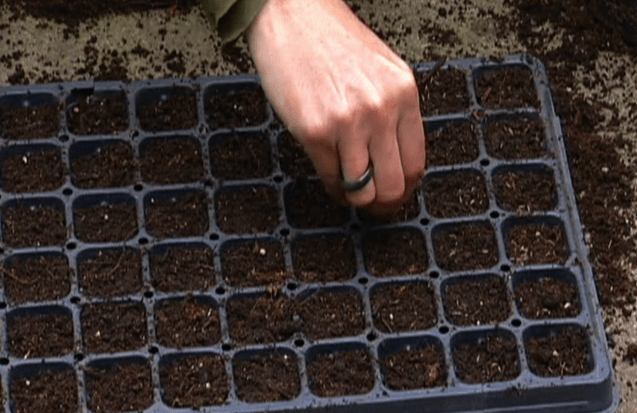
To successfully plant spider plant seeds, you’ll need to prepare the seed tray by filling it with a high-quality potting mix designed for indoor plants or by creating your own mix with peat moss, perlite, and compost. This will provide the necessary nutrients and drainage for the seeds to thrive. When planting the seeds, lightly cover them with a thin layer of soil and keep the soil consistently moist, but not waterlogged, to encourage germination. Choose a location that receives plenty of sunlight, loosen the soil, remove debris, and consider adding organic matter or slow-release fertilizer to create an optimal planting area for the seeds to thrive and flourish.
Sowing the seeds
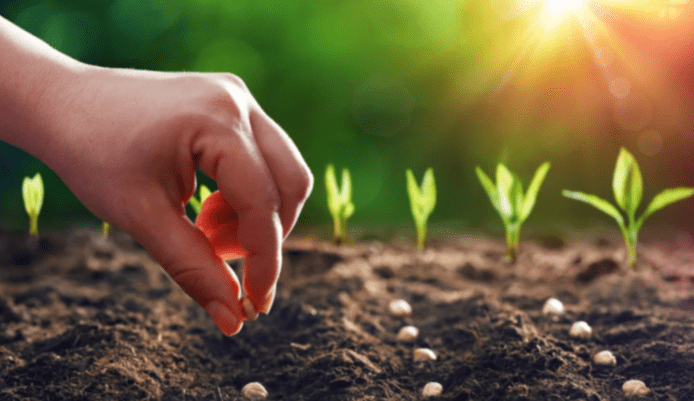
is an important step in the process of growing a spider plant. To start, prepare the soil by loosening it with a garden fork or trowel to allow for proper root development. Remove any weeds, rocks, or debris from the area to create a clean and optimal environment for your spider plant seeds. Additionally, consider adding organic matter or a slow-release fertilizer to the soil to provide the necessary nutrients for healthy plant growth. With the right preparation, you can create an ideal planting area for your spider plant seeds to thrive and flourish.
When it comes to planting the seeds, it’s important to prepare the seed tray by filling it with a high-quality potting mix designed for indoor plants or by creating your own mix with peat moss, perlite, and compost. This will provide the necessary nutrients and drainage for the seeds to thrive. When planting the seeds, lightly cover them with a thin layer of soil and keep the soil consistently moist, but not waterlogged, to encourage germination.
Choose a location that receives plenty of sunlight, as spider plants thrive in bright, indirect light. After sowing the seeds, it’s important to care for them by keeping the soil evenly moist, providing the right amount of sunlight, and ensuring a warm environment for optimal growth. With the right care and attention, your spider plant seeds will grow into healthy and vibrant plants.
Watering and covering
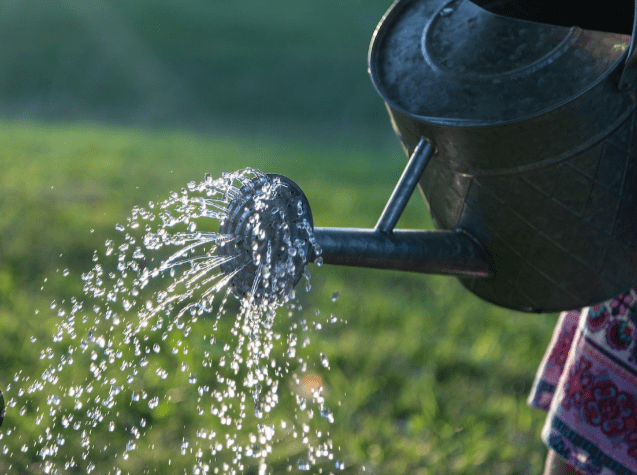
are essential steps in the process of planting spider plant seeds. When watering, be sure to keep the soil consistently moist, but not waterlogged, to encourage germination. It’s important to water the seeds regularly, but be careful not to overwater, as this can lead to rot and other issues. Additionally, covering the seeds with a thin layer of soil after planting helps to provide the right amount of moisture and protection for the seeds to germinate. This covering also helps to keep the seeds in place and provides a stable environment for them to grow. By properly watering and covering your spider plant seeds, you can create the ideal conditions for successful germination and healthy plant growth.
Caring for Spider Plant Seedlings
Watering and fertilization requirements
After sowing the seeds, it’s important to care for them by keeping the soil evenly moist, providing the right amount of sunlight, and ensuring a warm environment for optimal growth. With the right care and attention, your spider plant seeds will grow into healthy and vibrant plants. Watering and fertilization are essential steps in the process of planting spider plant seeds. When watering, be sure to keep the soil consistently moist, but not waterlogged, to encourage germination. It’s important to water the seeds regularly, but be careful not to overwater, as this can lead to rot and other issues. Additionally, covering the seeds with a thin layer of soil after planting helps to provide the right amount of moisture and protection for the seeds to germinate. This covering also helps to keep the seeds in place and provides a stable environment for them to grow. As the seedlings begin to grow, you can start fertilizing them with a balanced, water-soluble fertilizer. Follow the instructions on the fertilizer package to ensure you apply the right amount. Fertilizing the seedlings will help them to grow strong and healthy, promoting strong root development and vibrant foliage. By properly caring for your spider plant seedlings with the right watering and fertilization, you can support their growth and create healthy, thriving plants.
Providing the right light and temperature conditions
are crucial for the successful growth of your plants. Spider plants thrive in bright, indirect light, so it’s important to place them in a location where they can receive plenty of natural light. Avoid exposing them to direct sunlight, as this can burn their leaves. If you notice your plant is not getting enough light, consider moving it to a brighter location or using artificial grow lights to supplement natural light. In terms of temperature, spider plants prefer temperatures between 65-75 degrees Fahrenheit during the day and slightly cooler temperatures at night. It’s important to keep your plants away from drafts and extreme temperature fluctuations, as this can stress the plant and hinder its growth. By providing the right light and temperature conditions, you can ensure that your spider plants thrive and flourish in a healthy environment.
Thinning and transplanting seedlings
are important steps in promoting the healthy growth of your plants. When your seedlings have grown large enough to handle, it’s important to thin them out to give the remaining plants more space and resources to thrive. This can be done by carefully removing the weaker seedlings, leaving only the strongest and healthiest ones. Transplanting seedlings into larger pots or outdoor garden beds is also crucial for their growth. This allows the roots to spread out and the plant to access more nutrients and water. When transplanting, be sure to handle the seedlings gently and water them well after the transplant to help them establish in their new environment. By thinning and transplanting your seedlings, you can ensure that they have the best chance of growing into strong, thriving plants.
Protecting young plants from pests and diseases
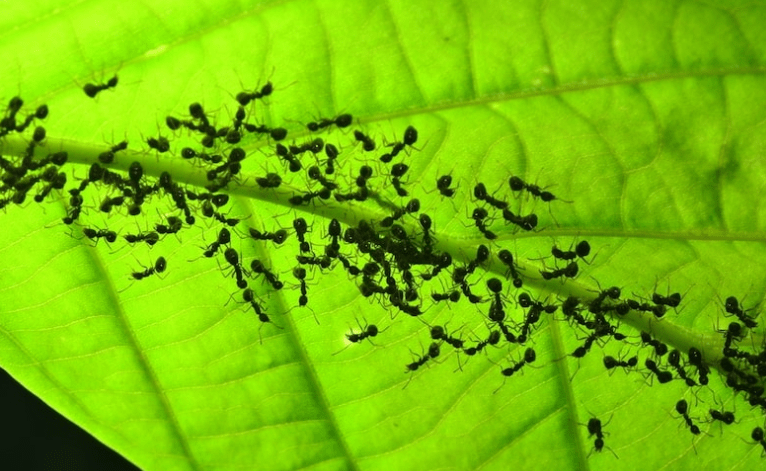
is crucial for their healthy growth. Pests and diseases can quickly damage or even kill young plants, so it’s important to take preventive measures to protect them. One way to do this is by regularly inspecting your plants for any signs of pests or diseases. Look for any unusual spots, discoloration, or signs of insect damage. If you notice any issues, take action immediately to prevent the problem from spreading.
Another important step in protecting young plants is to keep the garden area clean and free of debris. Remove any dead leaves, weeds, or other plant material that can attract pests or harbor disease. This will help create a healthier environment for your plants to thrive in.
Consider using organic pest control methods to protect your young plants. This can include using natural predators, such as ladybugs or lacewings, to control pest populations. You can also use organic pesticides or insecticidal soaps to help keep pests at bay. Just be sure to follow the instructions carefully and use these products sparingly to avoid harming your plants.
In addition, practicing crop rotation and companion planting can help prevent the spread of diseases and deter pests. By alternating the crops you plant in a specific area and pairing certain plants together, you can reduce the risk of pests and diseases affecting your young plants.
Overall, protecting young plants from pests and diseases requires proactive measures and regular maintenance. By taking these steps, you can help ensure that your plants grow and thrive in a healthy, pest-free environment.
Maintaining Mature Spider Plants
Ongoing watering and feeding schedule
It’s important to establish an ongoing watering and feeding schedule for mature spider plants to keep them healthy and thriving. Spider plants require regular watering, but it’s important not to overwater as this can lead to root rot. You can check the moisture level of the soil by sticking your finger into the soil to see if it’s dry an inch below the surface. When watering, make sure to water the soil directly and avoid getting the leaves wet, as this can lead to fungal issues. In terms of feeding, spider plants benefit from a balanced fertilizer diluted to half strength. You can feed them every two to four weeks during the growing season, but it’s best to avoid fertilizing during the winter months. Keeping to a regular watering and feeding schedule will help your mature spider plants stay healthy and flourish.
Pruning and grooming for optimal growth
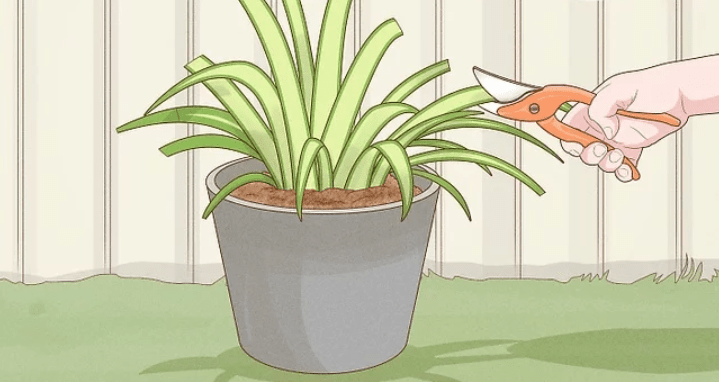
is essential for maintaining the health and appearance of your plants. Pruning helps to remove dead or damaged leaves, promote new growth, and maintain the shape of the plant. For spider plants, it’s important to remove any brown or yellow leaves as they can be a sign of overwatering or underwatering. Use clean, sharp scissors or pruning shears to carefully trim away any dead or dying foliage. Grooming involves removing any brown tips from the leaves, which can be done using scissors or by simply pinching off the damaged areas. Regular pruning and grooming will help your spider plants to look their best and encourage optimal growth. By taking these steps, you can help ensure that your plants grow and thrive in a healthy, pest-free environment.
Propagating Spider Plants
is a great way to expand your plant collection and share the joy of gardening with others. There are a few different methods you can use to propagate spider plants, including division, stem cuttings, and baby plantlets. Division involves separating the root ball of a mature plant into smaller sections, each with its own roots and foliage. This is best done in the spring when the plant is actively growing. Stem cuttings can be taken from the mature plant and rooted in water or soil to create new plants. Baby plantlets, which are small offshoots that sprout from the main plant, can also be removed and potted up to grow into new spider plants. Whichever method you choose, it’s important to provide the new plants with the right growing conditions, including proper light, water, and soil. With a little care and patience, you can successfully propagate spider plants to enjoy in your own home or share with friends and family.
Environmental Impact and Benefits
Spider plants are not only beautiful to look at, but they also have a positive environmental impact. They are known for their ability to purify the air by removing toxins such as formaldehyde and carbon monoxide. This makes them a great addition to any indoor space, especially in areas with poor air quality. Additionally, spider plants are easy to care for and can thrive in a variety of conditions, making them an eco-friendly choice for home and office decor. By propagating spider plants and sharing them with others, you can help spread the environmental benefits of these air-purifying plants to more people. This simple act can have a positive impact on the air quality in indoor spaces and contribute to a healthier environment for everyone.
In conclusion, growing spider plant seeds at home can be a rewarding and enjoyable experience. By following the steps and tips outlined in this post, you can ensure that your spider plant seeds have the best chance of successful growth. Remember to provide the right soil, water, and sunlight, and to care for your plant as it grows. With a little patience and attention, you can enjoy the beauty of a thriving spider plant in your home.
Frequently asked questions And Answer
You can start by collecting the seeds from a mature spider plant and planting them in a well-draining potting mix.
A well-draining potting mix that is slightly acidic is best for spider plant seeds.
Water the seeds whenever the top inch of soil feels dry to the touch, but be careful not to overwater as this can lead to rot.
Spider plant seeds typically germinate within 1-2 weeks if kept in a warm and humid environment.
Yes, spider plant seeds require bright, indirect sunlight to grow successfully.
Once the seedlings have sprouted, continue to water them as needed and provide them with plenty of indirect sunlight.
Yes, spider plant seeds can be successfully grown indoors as long as they have access to bright, indirect sunlight and proper care.
It can take several months for spider plant seeds to grow into mature plants, but with proper care, they will eventually produce new spider plant offspring.

